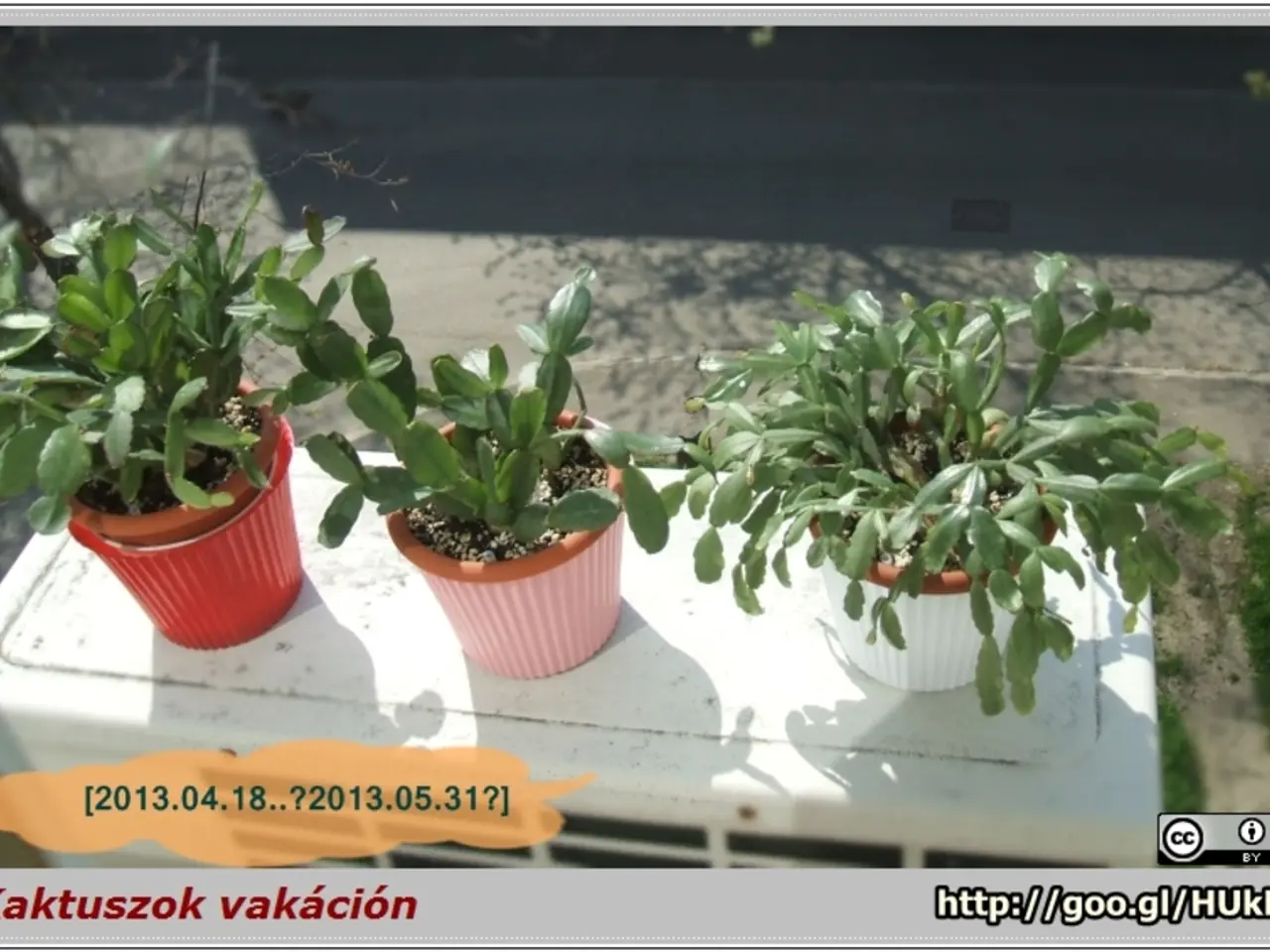Assess Soil Humidity: A Brief Guide to Flourishing Vegetation
Keeping your potted plants healthy requires understanding their watering needs, and a soil moisture meter can be a valuable tool in this endeavour. Here's a step-by-step guide on how to use one, along with other manual methods, to ensure your plants are always well-watered.
Using a Soil Moisture Meter
- Insert the meter's probe into the soil, approximately 2-5 inches deep, depending on the size of the pot and plant. For larger pots, a deeper insertion is necessary.
- Read the moisture indicator. Many meters use a scale or colour coding – for instance, blue indicates moist soil, while white or no colour means dry soil. Some advanced meters show pF values, providing more accurate watering guidance.
- Leave the meter in the soil or remove it after reading. Soil moisture meters are supplementary and should be used along with manual checks.
- Test the soil every 7-10 days, and wait 15-20 minutes after watering before checking again. If the reading is in the blue 'wet' zone, the plant has been watered sufficiently.
- Remember to clean the meter after each use and store it in a dry place.
Manual Probing Methods
Finger Test
Insert a finger 1-2 inches into the soil near the plant base. If it feels dry at that depth, the plant likely needs watering. If it's damp, wait to water.
Skewer or Wooden Stick Test
Insert a wooden skewer fully into the soil, leave it for several minutes, then pull it out. If the skewer feels cool or damp, the soil still has moisture. If it's dry and warm, the soil is dry.
Visual and Tactile Clues
Observing Soil Surface
Look at the soil surface colour and texture. Dry soil often appears lighter and may pull away from the pot edges, while moist soil looks darker and compact.
Checking Pot Weight
Observe the weight of the pot. A light pot usually indicates dry soil, while a heavy pot suggests wet soil, though this is more practical for smaller containers.
Additional Test: The Paper Towel Test (for pots with drainage holes)
- Place a dry paper towel under the pot's drainage hole.
- Wait a few minutes, then check if the towel is damp.
- A damp towel means the soil still contains moisture, and watering can be delayed. A dry towel suggests the soil might need watering.
Innovative Options
Some moisture indicators like the PlantDoc Mushroom change colour (from white to green) as soil moisture changes, providing a biodegradable, visual cue for soil wetness.
Remember, combining these methods enhances accuracy. Soil moisture meters provide a quantitative measurement, while finger or skewer tests and visual cues give practical, immediate feedback. Always consider soil type, pot size, and plant needs when interpreting results, as these factors can affect readings and moisture retention.
For example, a moisture-loving plant should be watered when the soil is still slightly moist, while a drought-tolerant plant needs to be watered when the soil is completely dry.
Troubleshooting issues with the meter may include not receiving a reading, a bouncing needle, high salt content in the soil, or inaccurate readings due to fluffy soil.
By understanding and applying these methods, you'll be well on your way to keeping your potted plants thriving and healthy!
Maintaining a healthy lifestyle for your home-and-garden plants includes using a soil moisture meter to determine the appropriate watering schedule, while also employing manual methods like the finger test, skewer or wooden stick test, observing the soil surface, checking pot weight, and the paper towel test for pots with drainage holes.
If you're looking for innovative solutions, consider moisture indicators like the PlantDoc Mushroom that change color based on soil moisture levels, offering a biodegradable, visual cue for soil wetness.



